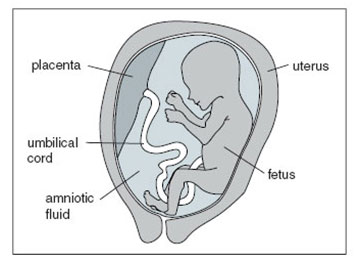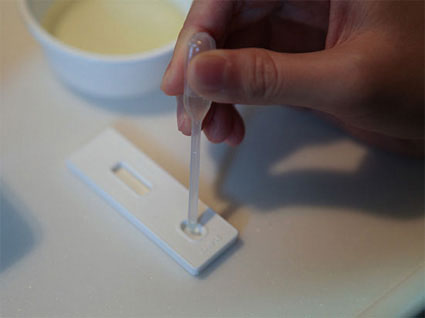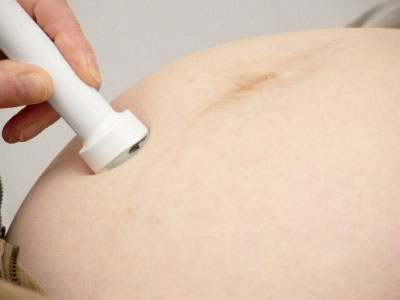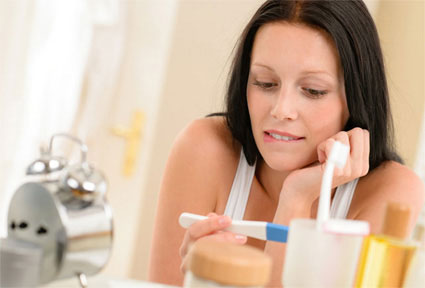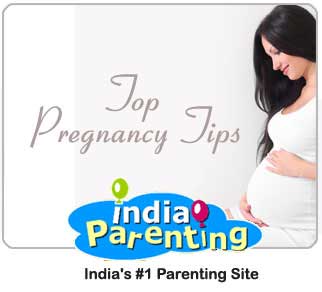
Your baby grows in your uterus with the help of a special life-support system formed during pregnancy. This is made up of placenta, the umbilical cord, and the amniotic sac. The baby is present in an amniotic sac (filled with amniotic fluid), which protects the baby from outside hits, knocks or any pressure. The placenta connects the developing baby to its mother via the umbilical cord.
Placenta
Placenta is an organ formed during
pregnancy that implants itself to the inside walls of uterus. Umbilical cord grows from the placenta and is attached with the baby through its other end. Placenta is made from the same sperm and egg cells that form your baby and it produces hormones that help your baby grow.
Blood Supply to the Baby
The placenta is responsible for the blood supply between you and your baby, keeping both the blood supplies separate. Oxygen and nutrients pass from your blood supply to the placenta, which is then transferred to the baby through the umbilical cord. Baby’s waste products are also transferred through the umbilical cord to the placenta and then to your bloodstream, which is later disposed by your body.
Protection to the Baby
Placenta protects your baby from infections and bacteria. However, it cannot protect your baby from viruses. If you are not immune to a certain virus, it can pass through the placenta and reach your baby causing
miscarriage, birth-defects or still-births. It can also transfers alcohol, nicotine, drugs etc to your baby, which is why it is recommended to avoid these during pregnancy.
Antibodies for Baby
In the last stage of
pregnancy, placenta also transfers antibodies from you (only the ones present in your body) to your baby that builds their immunity for about three months after birth.
After your baby’s birth, placenta is removed from your body in a process called “afterbirth”. There can be one complication known as “
Placenta Previa”, where the placenta attaches itself near or over the cervix. This condition requires proper medical care for safe
labour and delivery.
Umbilical Cord
The umbilical cord connects the baby to its mother. One end grows from the placenta and the other end is attached to the baby. The cord generally grows from the centre of the placenta and is long enough to give the baby sufficient space to move around in the womb.
The umbilical cord is made of three blood vessels:
- One large vein that transfers blood (carrying oxygen and nutrients) from you to your baby.
- Two small arteries that transfer waste products and also carbon dioxide from your baby back to the placenta.
These blood vessels are protected by a substance called Wharton’s jelly. This jelly is surrounded by a layer of membrane called the amnion. After your baby’s birth, your physician will cut the umbilical cord leaving 2-3cms of cord (umbilical stump) on your baby’s belly button. It is advised to keep this area clean and dry to avoid any infections and for the umbilical stump to dry out and fall off.
Amniotic Sac
Amniotic sac is a bag filled with amniotic fluid where the baby grows and develops. This sac is also known as “membranes” because it is made of amnion and chorion membranes. The baby floats and moves around in this sac, which protects it from the outside hits, knocks and injury. This sac also helps the baby in building muscle tone.
The Amniotic Fluid
The amniotic fluid has a slightly higher temperature than the mother’s body, usually 99.7F. The sac starts filling up after a few days a woman conceives and keeps gradually increasing throughout pregnancy. At week 10, there is around 30ml of fluid. By this time, the baby also starts passing out small amount of urine in the fluid. At week 34-36, amniotic fluid reaches its maximum level, around 1litre. About week 38, it starts reducing until the baby is born.
Breaking of Water
Before or during labour, the amniotic sac may break causing the fluid to drain out from the vagina. It may either be slow dripping or a sudden gush of water flowing from your vagina. This is known as “water breaking”. The umbilical cord is still supporting your baby but you should immediately call your physician.
Twins
Non-identical twins have separate placentas, amniotic sacs, and umbilical cords. On the other hand, identical twins often share the same placenta, may be in two different amniotic sacs but definitely have their own umbilical cords.
Baby in the womb grows and develops with the help of placenta, umbilical cord and the amniotic sac. All three have their own importance regarding their placement, their length and their functions for a healthy pregnancy and a healthy baby.












 Your baby grows in your uterus with the help of a special life-support system formed during pregnancy. This is made up of placenta, the umbilical cord, and the amniotic sac. The baby is present in an amniotic sac (filled with amniotic fluid), which protects the baby from outside hits, knocks or any pressure. The placenta connects the developing baby to its mother via the umbilical cord.
Your baby grows in your uterus with the help of a special life-support system formed during pregnancy. This is made up of placenta, the umbilical cord, and the amniotic sac. The baby is present in an amniotic sac (filled with amniotic fluid), which protects the baby from outside hits, knocks or any pressure. The placenta connects the developing baby to its mother via the umbilical cord.